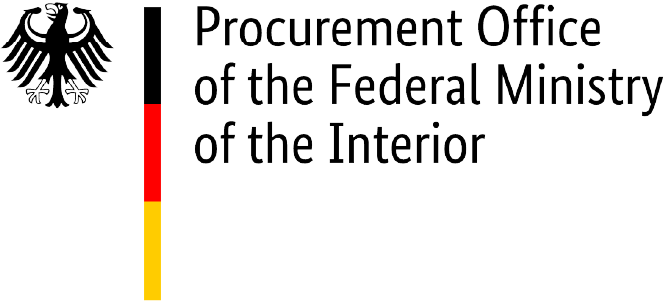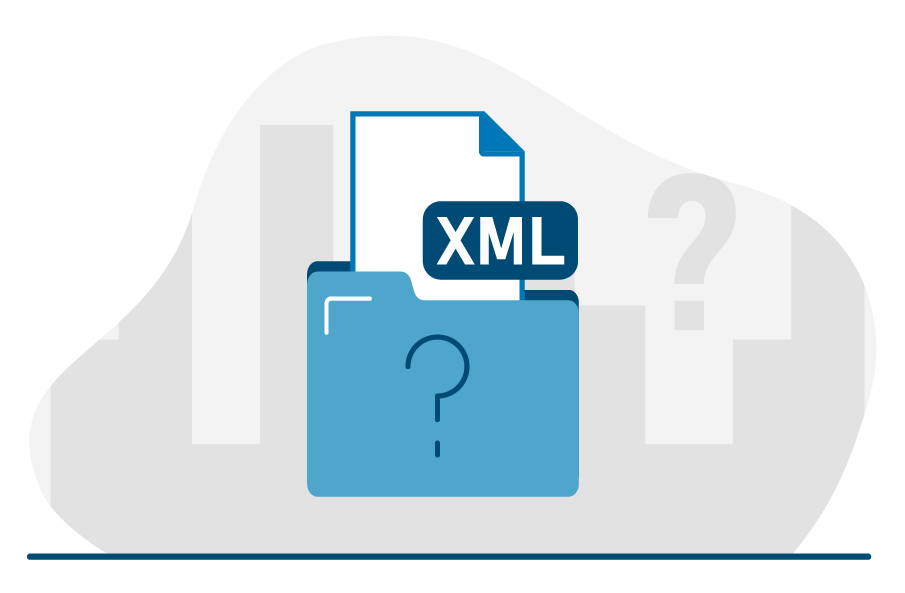A quick overview
What is an e-invoice?
An e-invoice transmits invoice data electronically and can be received and processed in an automated manner. The process is fully digital, from the creation of an invoice to its payment.
Unlike a paper invoice or invoice in a fixed-layout format such as a PDF file, an e-invoice presents invoice information in a structured, machine-readable data file. Invoices issued in this form can be
- transmitted electronically,
- received electronically,
- further processed and presented for payment in an automated manner – electronically from start to finish.
Establishing e-invoicing in Germany
Digital and automated processes are becoming commonplace in today’s business settings. E-invoicing is a key feature of this transformation. Since 27 November 2020, suppliers of Germany’s federal administration have been required to issue invoices in electronic form for goods and services provided under public procurement contracts. But regardless of this legal requirement, it is worth taking a closer look at how e-invoicing can benefit your company.
The following laws provide the legal basis for establishing e-invoicing in Germany:
- Council Directive 2010/45/EU amending Directive 2006/112/EC
- The Tax Simplification Act of 2011 (Steuervereinfachungsgesetz 2011, StVereinfG, in German only)
- Directive 2014/55/EU of the European Parliament and of the Council on electronic invoicing in public procurement
- Act to Implement Directive 2014/55/EU in Germany (E-Rechnungsgesetz, in German only)
- Ordinance on Electronic Invoicing in Federal Public Procurement (E-Rechnungsverordnung, E-RechV, in German only)
The following timeline provides an overview of standards and implementation dates in connection with the above legislation:
Timeline of the e‑invoicing legislation
PDF, 3.070 KB
The following timeline provides an overview of standards and implementation dates in connection with the above legislation.
Reaching a high level of acceptance for e-invoicing was an important milestone in making the public procurement process automated and electronic from start to finish. Sending and receiving e-invoices via the European Peppol network is the best way to ensure automated processing. Germany’s federal administration already receives e-invoices via this transmission method. Switching to e-invoicing is therefore a worthwhile investment in a digitised and automated public procurement process that is transparent, fast and secure.
Five steps to sending an electronic invoice
Video text: Five steps to sending an electronic invoice
Welcome. This video provides information on electronic invoicing in the federal administration. It is published by the Procurement Office of the Federal Ministry of the Interior.
The following video will take you through five steps showing what you need to know when sending electronic invoices to federal contracting authorities.
The video is aimed primarily at invoice issuers or users who want to know more about electronic invoicing.
More information on electronic invoicing in the federal administration is available at www.en.e-rechnung-bund.de.
But first of all, what is an electronic invoice (e-invoice)?
An e-invoice in line with the EU standard is not the same as a scanned paper invoice or a PDF invoice. An e-invoice has a specific structured format and is transmitted and received electronically, enabling automated and seamless processing.
E-invoices use an XML data format, which is primarily used for fully automated processing and is usually not suitable for visual verification.
Electronic invoicing can be carried out using various standards and specifications, including the XRechnung standard.
Since 27 November 2020, all suppliers of the federal administration have been obliged, under the E-Invoicing Ordinance (E-Rechnungsverordnung), to submit electronic invoices for direct contracts with a net value of 1,000 euros or more. Exceptions to this requirement are stated in the E-Invoicing Ordinance.
There are two electronic portals for submitting invoices to the direct federal administration, parts of the indirect federal administration, and participating federal states. One of these portals is the Federal Central Invoice Submission Portal (ZRE); the other is the Online Access Act-compliant Invoice Submission Portal (OZG-RE).
Before sending an invoice, you should be sure to use the correct portal. When awarding you the contract, your contracting authority should inform you which invoice submission portal to use; if you are unsure about this, please ask your contracting authority.
Information about which authorities should be invoiced via the ZRE and which authorities should be invoiced via the OZG-RE is also available on our website: www.en-e-rechnung-bund.de/e-invoicing-for-federal-administration-invoice-issuers.
In order to use one of the invoice submission portals, you must first register with it. Registration is free of charge and is necessary no matter which method you choose for transmitting invoices. Once you have registered, you can start to submit invoices.
For detailed information on registering with the invoice submission portals and managing your user account, see the tutorials on how to use the ZRE and OZG-RE. These can be found on the federal e-invoicing website.
Before sending an e-invoice to a federal contracting authority, you should choose the transmission method that works best for you.
If you do not have software for creating electronic invoices, you can enter your invoice data into the submission portal via your web browser and then submit this data as an e-invoice.
If you wish to send small numbers of e-invoices you have created yourself, you can upload these to the invoice submission portal.
If you need to send high volumes of invoices, you may prefer to use the Peppol web service or email transmission methods.
Further information on transmission methods can be found in our FAQs and tutorials on how to use the ZRE and OZG-RE.
Once your e-invoice has been submitted via an invoice submission portal, it goes through a validation process. This process checks whether your e-invoice meets certain formal criteria.
After successful validation, your e-invoice is delivered to the recipient.
Once it has been delivered, you can check the status of your e-invoice via the portal to see when it has been collected by the recipient. You can opt to receive an email notification whenever the status of your invoice changes.
If you have any questions, please contact the Bundesdruckerei help desk by telephone or email.
On the other pages of our website, including the “library”, you will find further information on e-invoicing in general and extensive content that will help you make the switch to e-invoicing. The website is continually updated with new content and formats, so we advise you to check it regularly.
Important information: Please note that the federal invoice submission portals, ZRE and OZG-RE, will be consolidated by summer 2025. Following the consolidation, only the OZG-RE will be operated as the sole federal invoice submission portal. The operation of the ZRE will be discontinued as of 31 December 2025. Suppliers will receive all relevant information and the required details for future invoicing directly from the authorities to which they submit invoices. For further details, please refer to this article.

